Thursday, May 3, 2012
Canned beans are terrific, but you’ll save money and reduce your environmental footprint by preparing them from dried. It’s easy!
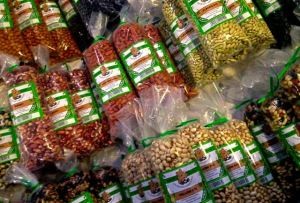 Does this title even make sense? Parents out there, I beg you to answer! I am using this title in recollection of gluing dried macaroni and beans and such on paper plates as a tot. Have art projects become more sophisticated since then? Is there even art instruction at all? Or are 5-year-olds just on Twitter these days? These are the questions that keep me up at night.
Does this title even make sense? Parents out there, I beg you to answer! I am using this title in recollection of gluing dried macaroni and beans and such on paper plates as a tot. Have art projects become more sophisticated since then? Is there even art instruction at all? Or are 5-year-olds just on Twitter these days? These are the questions that keep me up at night.
That, and wondering why people don’t eat more beans and legumes. (How’s that for a smooth segue from kindergarten to beans?) A foundation of many plant-based diets, beans are an incredible source of protein and fiber alongside many other beneficial phytochemicals and nutrients that vary by species. My post on salsa verde included black beans, for example, and beans show up in my chili, salads, and soups, too. (Although I’ve not yet posted recipes to two fabulous bean soups, Moroccan red lentil and Cuban black bean. Delicious.) Americans in particular do not include nearly enough of these fruits in their diet, and they should not only to provide variety and yumminess, but also as a foundation of sustainable eating. In other words, the ability to which you can limit your meat consumption—even if you do not omit it completely from your diet – will be a boon to your personal health as well as the environment given the smaller amount of resources needed to grow plant foods. And if you start from dried beans, whether from the bulk bins at the local coop or store or pre-packaged on supermarket shelves, your are also doing the environment a favor by supplanting the tin-coated steel or aluminum cans. Reduce, reuse, recyle are the three r’s associated with environmentalism, but people often overlook the first and most important facet – reduce – especially in their food choices.
Preparing Dried Beans
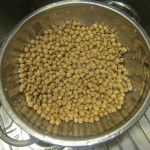 Step 1. Rinse the dried beans in a few changes of fresh water.Dried garbanzos (aka, chickpeas) are small and hard, but they soften right up given time, heat, and water. (A little love doesn’t hurt, either.)
Step 1. Rinse the dried beans in a few changes of fresh water.Dried garbanzos (aka, chickpeas) are small and hard, but they soften right up given time, heat, and water. (A little love doesn’t hurt, either.)
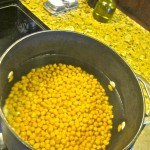 Step 2. Soak the beans. Two methods, choose whichever works for you: 1) Soak the beans overnight in cold water, approximately 8 hours or 2) Pour boiling water over beans and soak, covered, for 1.5 hours. Or, bring them up to a boil then remove them from the burner, cover, and let sit 1.5 hours. Either way. The water should be about 3″ above the top of the beans.The beans plump as they absorb water during the soaking process.
Step 2. Soak the beans. Two methods, choose whichever works for you: 1) Soak the beans overnight in cold water, approximately 8 hours or 2) Pour boiling water over beans and soak, covered, for 1.5 hours. Or, bring them up to a boil then remove them from the burner, cover, and let sit 1.5 hours. Either way. The water should be about 3″ above the top of the beans.The beans plump as they absorb water during the soaking process.
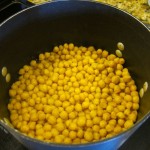 Step 3. Cook the beans. Drain the beans, rinse, and add back to the same pot. Fill with cold, unsalted water (again, about 3″ above the beans), bring to a boil, then simmer with the cover askew for approximately 45-90 minutes. The time depends on a) the size and type of beans you are preparing, as larger beans take longer, and b) how soft you like your beans. For example, garbanzos take about 1.5 h to cook while black beans take about 1 h; I prefer my beans on the firm side. Extrapolate accordingly, or do a quick google search to give you a more precise estimation for whatever bean you are cooking. Once they’re cooked, they’ll begin to look like the beans you usually get from the can, minus the sodium, preservatives, and, well, can! So much better for all involved.
Step 3. Cook the beans. Drain the beans, rinse, and add back to the same pot. Fill with cold, unsalted water (again, about 3″ above the beans), bring to a boil, then simmer with the cover askew for approximately 45-90 minutes. The time depends on a) the size and type of beans you are preparing, as larger beans take longer, and b) how soft you like your beans. For example, garbanzos take about 1.5 h to cook while black beans take about 1 h; I prefer my beans on the firm side. Extrapolate accordingly, or do a quick google search to give you a more precise estimation for whatever bean you are cooking. Once they’re cooked, they’ll begin to look like the beans you usually get from the can, minus the sodium, preservatives, and, well, can! So much better for all involved.
Step 4. Store the beans for future use. And remember that dried beans almost double in size. They last in the fridge about 1 week.
Now that you see how easy it is to prepare beans from dried, I hope you’ll consider trying it at home. It’s a super weekend (or evening) cooking project. That said, I will freely admit that my pantry always includes (no salt-added, organic) canned beans. I don’t always have a chance to make them from dried, and I’m sure you don’t either. And, given they have so many culinary uses, and as I often just eat a big salad for dinner, keeping canned beans on hand is an important staple of my diet. (I don’t churn my own butter or mill my own grain, just for the record; I even eat pizza and—gasp!—order take out sometimes, too.)
So, whether the star of your Meatless Monday or simply a tasty add-on source of protein and nutrients to a salad, think about adding some more beans and legumes to your diet. And if this post leaves you wondering the age-old question, “What is the difference between a bean and legume?” here’s some more info on that. (Short answer: a bean is a type of legume.) And if that query leads to the natural follow-up, “And how do nuts fit in, again?” along with the classic example of the peanut, that’s discussed here. Classification is certainly fun for us science geeks and hopefully of moderate interest to at least a few of you reading this—humor me? please?—but a discussion of bean, nut, pea, legume, and grain botany is beyond the scope of today’s post. So, until I give that subject its due time, just … eat more beans. I mean, legumes. I mean, nuts.
Right.

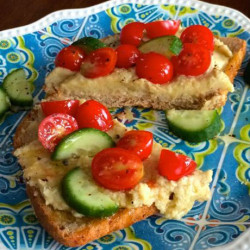
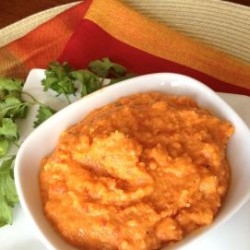
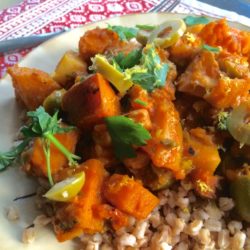
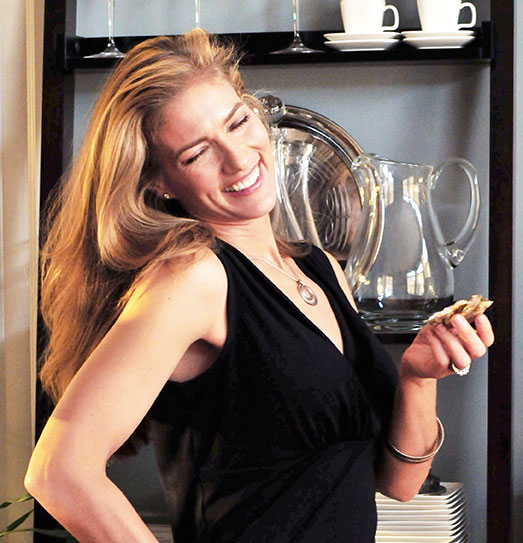
Down south we do love black eyed peas ( and rice), butter beans, green beans, pinto beans, and in field photography bag, I always carry nuts ( for an energy snack while hiking), and two bags of dried Navy beans. The bags of dried Navy beans are extremely light weight, and make an incredibly stable base for my camera when a tripod is not practical or available. You just place the bag(s) on a stable surface ( fence post, log, table or chair) and pisition them to support the camera lens. Afterwards, you can cook them up. Best “bean bags” out there! Awesime post!
Love the bean multi-tasking! Thanks for the comment, Stan! So great to hear someone who eats so many beans of so many kinds. Fabulous!
This is so useful, thank you! I was just thinking about this today, as I need garbanzos for a recipe. You make it sound so easy, thanks for all the tips! And the kindergarten bean art title TOTALLY made sense to me. And made me want to do some art projects.
Awesome. So easy. Let me know how it goes. And glad to know someone else out there remembers low-tech art projects!
LOL…Yes, your title made perfect sense! As soon as I read it I had flashbacks of kindergarten!
Whew! Thanks for letting me know, Terri. And for reading :). Happy weekend!
I’m a one-person household, but cooked beans freeze really well so I go ahead and cook the whole 1-1/2 lb bag and then freeze in different portion sizes for later use.
Awesome!
Dried beans are great! A friend of mine made me a cover for my iPhone out of black and white beans and I use it every day. I told my friends it was a swarovski fashion accessory.
Nice. Ever tried eating ’em??? 😉